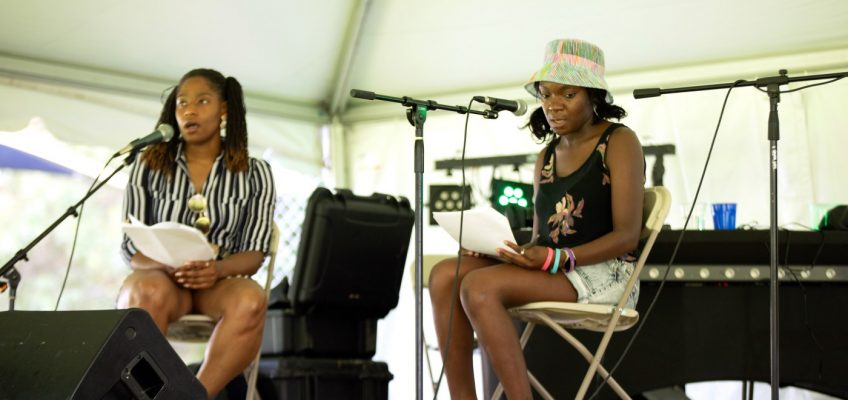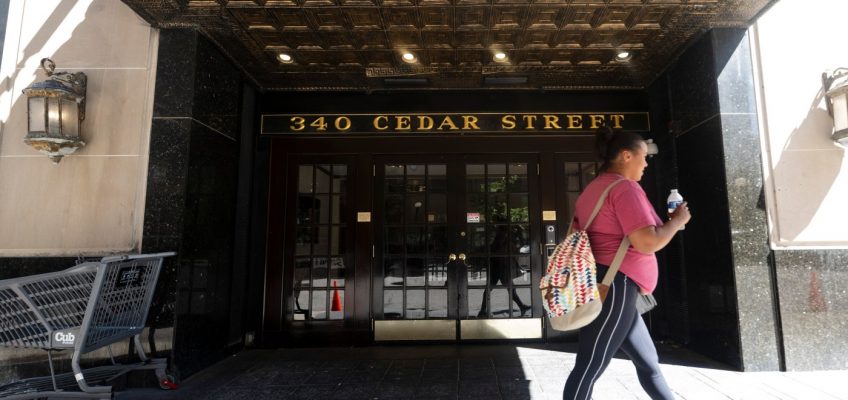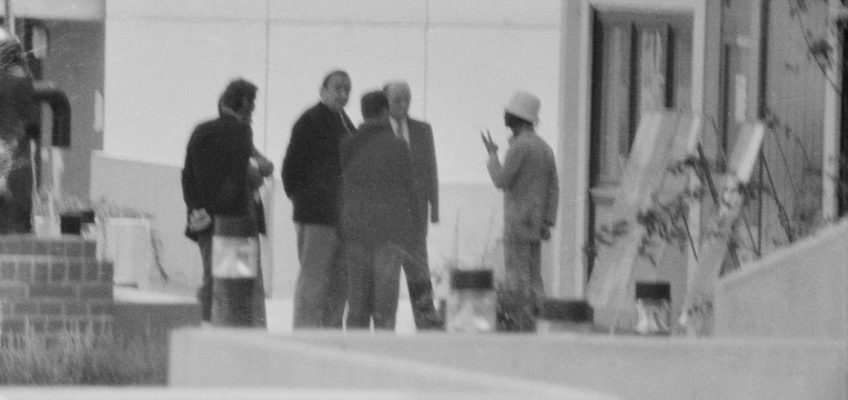A transportation advocacy organization has been organizing events this summer to encourage community members to rethink their streets.
The organization, Our Streets, formerly known as Our Streets Minneapolis and the Minneapolis Bicycle Coalition, hosted their first event July 14 at Central Village Park in St. Paul’s Rondo neighborhood. In addition to having attendees envision how their neighborhoods could look without Interstate 94, event organizers also wanted to celebrate those who comprise the heart and soul of the Frogtown and Rondo neighborhoods.
The event occurred as the Minnesota Department of Transportation determines what to do about I-94’s future.
The organization hosted a similar event Aug. 10 in North Minneapolis, focusing on Olson Memorial Highway. MnDOT is determining what to do about that highway’s future, too.
The next Imagine event in the series will again focus on I-94 and be held Sunday in Minneapolis’ Cedar-Riverside neighborhood (learn more at ourstreetsmn.org).
All three events included performances that were curated by local artists, community groups and business owners.
The event series differs from Open Streets Minneapolis. For years, Our Streets closed miles of roadway in Minneapolis throughout the summer for people to walk, bike, shop and eat on. Last year, as the organization sought funding from the city of Minneapolis to organize the Open Streets series, the city instead put those events out to bid to different organizations.
The Pioneer Press interviewed Our Streets executive director José Antonio Zayas Cabán (JC), community development and events senior manager Ember Rasmussen (ER), as well as artist Hawona Sullivan Janzen (HSJ), to understand the planning and purpose behind the events. Their responses were edited for clarity.
Q: What is the purpose of the Imagine series?
José Antonio Zayas Cabán: This event series is much more closely tied to our advocacy work. The Imagine series is basically our commitment to the community. We’re thinking about the idea of block parties with a purpose, to put it together in areas that have been impacted by major construction projects like the interstate. And also put a twist on it so that people could come in and imagine what it could feel like if we replaced the highway with, or imagine what it could feel like if we had, a car-free corridor.
The best way to build trust and get people to ideate and imagine what’s possible is to come to them and make it accessible, make it welcoming and make it interesting for them. So the idea of having food, music, artists and makers gives people a reason to gather together. And when they gather together, then they also have the opportunity to engage with new information, engage with new ideas, provide feedback, ask a lot of questions.
It also allows us to build that trust and take all of that engagement and help shape it into something that we can advocate for.
When the Minnesota Department of Transportation creates a project, they have very limited, inaccessible engagement and then move through fairly quickly, and sometimes people don’t even know what’s going on, they don’t know that I-94 is being reconstructed, even though the project has been going on for over a decade.
They don’t know what’s possible with a highway other than rebuilding a highway. So we introduced the idea of highway removal. We tried to kind of think about the gaps in the agency’s process. And we try to address those gaps by making it as meaningful and as impactful as possible.
Q: How does it differ from Open Streets?
Related Articles
St. Paul Athletic Club goes to auction Monday with bids starting at $750,000. It was built in 1917 for $1 million.
Westbound I-94 in St. Paul to close this weekend
Como Park Zoo welcomes two endangered tiger cubs
Troubled Lowry Apartments sold for $7 million to mortgage lender
Detours planned along South Snelling Avenue in St. Paul between Sept. 9-19
JC: Open Streets is a little bit more of an invitation for people to come out and see, experience a certain part of the city. Open Streets is by and large a street festival where people can come down a corridor and engage with anything that we can fill it with, and ideally it’s representative of the neighborhood that we’re in. But it’s not necessarily a corridor that is connected to a particular Our Streets advocacy project.
The Imagine series is a bit more neighborhood-centric, because it’s smaller scale. And the events don’t necessarily have to take place on a street closure, like this one is in a park. It’s more about being embedded within the community and really kind of to engage with the community.
Open Streets festivals are awesome, and they’re generally really well attended. But we felt like we needed a community engagement event series that really touched on the idea of ‘what could be,’ so that we could add to the dimension of how we get people on top of door knocking and forums, and of course, surveys and action steps. There’s still some activism behind the Imagine series, it’s just embedded in a community event.
Q: How can people participate in the series?
Children create screen printed tote bags at an Imagine Rondo event at Central Village Park in St. Paul on July 14, 2024. (H. Jiahong Pan / Special To The Pioneer Press)
Ember Rasmussen: At the Rondo event, we had screen printing that was designed by Ain Dai Yung indigenous youth, and then also in partnership with Courtney Cochran, who’s an Anishinaabe artist, and so she’s doing live screen printing. We’ve got Broderick Poole, who’s a Rondo resident and he was doing a ‘build your own neighborhood hero activity,’ where folks can build the Rondo or Frogtown hero of the past, present, or future using textiles and markers and a bunch of other materials. And then Michele Spaise was doing what she’s calling ‘Reforesting Rondo,’ and it’s an open space where folks can tell their stories and thoughts and memories through just like open mic or through shadow puppetry, and just a creative space to share their thoughts.
At the Imagine 6th Avenue North event on Aug. 10, attendees enjoyed music from Near North musicians, including Traveion, Se’Anna, and Casual Confusion. The event also featured a Northside vendor market in partnership with the Dream Shop. Attendees could view the Bring Back 6th mobile history museum and leave a message sharing their experiences with Olson Memorial and dreams for the future on the Imagine Dream phone.
At Cedarfest, attendees will be able to enjoy free performances on four different stages. There will be lots of free, family friendly activities including Adventures in Cardboard open melee (cardboard swords, intersection of Cedar & Riverside), Camel Rides (Dania Hall lot, $5 suggested donation), a dunk tank, a Wienie Dog Race (2 p.m. in front of the Wienery), Roller Skating by Twin Cities Skaters, a sound equipment “petting zoo” by KFAI, face painting, tie dye and Southside Battletrain’s mobile jungle gym. There will be a pop-up Flea Market & Makers Market in front of Palmer’s Bar featuring West Bank vendors and artists. Local restaurants, including Cafe Jote, Segal Somali Cuisine, Lucky Dragon Chinese and others will be vending on the street and share flavors from around the world.
Q: You all distributed $10 vouchers for people to use at the Rondo event. How come?
JC: Our goal ultimately is to make sure that everything at these events is as free as possible. We have food vouchers, so that people can basically go around and get $10 put towards their food.
Related Articles
Westbound I-94 in St. Paul to close this weekend
New cars cost too much? Consumer Reports offers used model ‘top picks.’ Here’s the top 10
Detours planned along South Snelling Avenue in St. Paul between Sept. 9-19
Stillwater starts school year with a familiar issue: bus headaches
Demolition of Kellogg Boulevard/Third Street bridge will begin in earnest on Monday
In an ideal world, if we continue to grow this program and more resources come our way, we’re basically working toward removing financial barriers. That’s really important to us as an organization, that we’re uplifting communities that have been deeply harmed by infrastructure decisions, and highlighting some of the richness and diversity in those communities in a way that’s welcoming and inclusive.
Q: How did you all source the vendors and performers?
Hawona Sullivan Janzen: I wanted to try to do it as grassroots as possible. I literally went into neighborhood groups and asked, invited people, ‘Hey, do you have a talent that you’d want to share at this festival? Go to this place and fill out a form.’ Then I started to look at what was coming in, and then I would give them a call and ask them to do it. It all just sort of became who could do it on this day. And this time, we waited to be sure that people were from this community, unlike me, who just adopted it.




